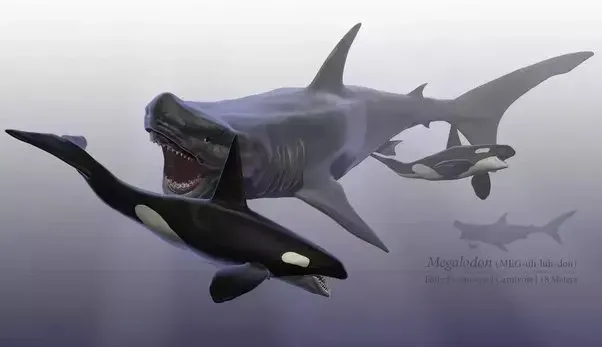The Megalodon
The Megalodon (Carcharocles megalodon) is one of the largest sharks that ever lived on Earth. This gigantic shark, which swam the oceans during the Cenozoic (about 23-3.6 million years ago), was between 15 and 18 meters long, although some studies suggest it could have reached even greater sizes, up to 20 meters.
History and Discovery
The Megalodon was first described by Louis Agassiz in 1835, based on giant fossil teeth that were impressively large, sometimes exceeding 18 centimeters. These teeth, along with fossilized vertebrae, are among the few remains we have of the Megalodon, as the cartilaginous skeleton of sharks does not preserve well.
The Megalodon was a superpredator and likely fed on large prey such as whales, dolphins, and other big fish. Its distribution was widespread, with fossils found all over the world, suggesting it was present in all the oceans.
Extinction
The Megalodon went extinct about 3.6 million years ago, towards the end of the Pliocene. The causes of its extinction are not entirely clear but are thought to be related to climate changes, a decrease in prey availability, and competition with emerging marine predators, such as the orca and the great white shark (Carcharodon carcharias).
Theories on Its Possible Current Existence
Although science considers that the Megalodon went extinct millions of years ago, there have been numerous unconfirmed theories and sightings suggesting that the giant might still exist in the ocean’s depths.
Sightings and Legends: Some sailors and fishermen have reported sightings of enormous sharks, but none of these reports have been verified. The lack of concrete evidence, such as clear photos or videos, makes these stories highly speculative.
Conspiracy Theories and Pseudoscience: Some documentaries and TV programs have suggested that the Megalodon might survive in the deepest and unexplored parts of the oceans. However, the scientific community rejects these theories, citing the lack of recent fossil evidence or any other tangible proof.
Arguments Against Survival: The main argument against the Megalodon’s survival is that a predator of such size would need enormous amounts of food and would be easily detected, given modern maritime traffic and underwater exploration technologies. Additionally, there are no recent remains or teeth indicating the continued presence of the Megalodon.
Conclusion
Despite its fascinating and imposing presence in our prehistoric oceans, is considered extinct by the scientific community. The theories about its survival are more based on speculation and legends than on concrete evidence. Nevertheless, its figure continues to stimulate popular imagination and generate stories that blend mystery and terror.

Subscribe to our YouTube channel






